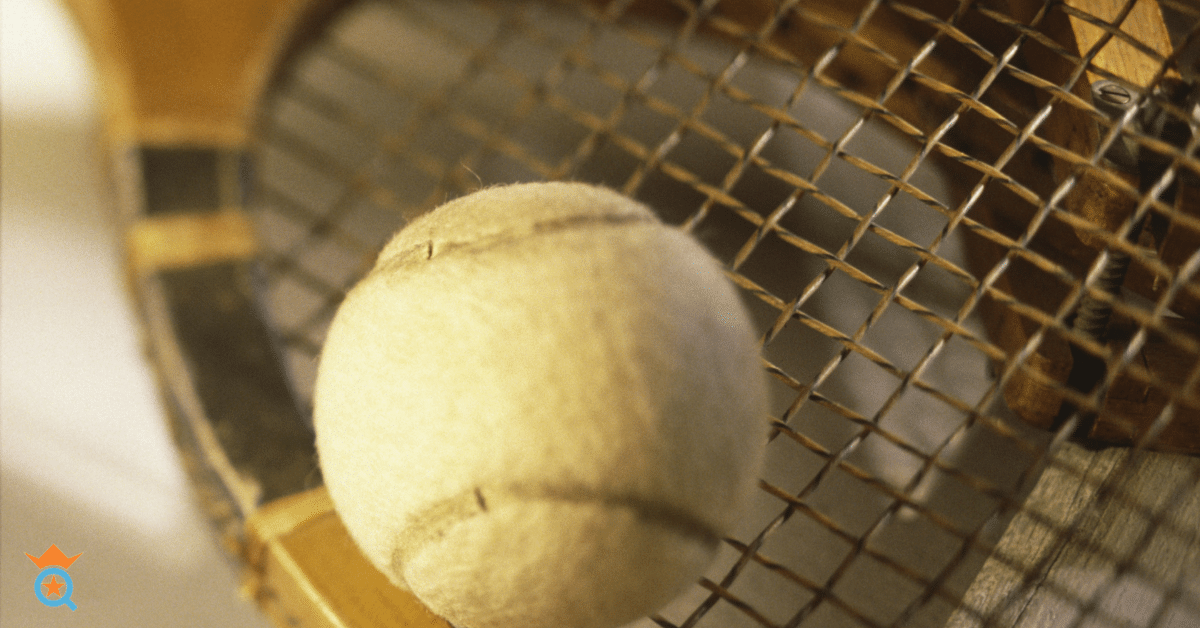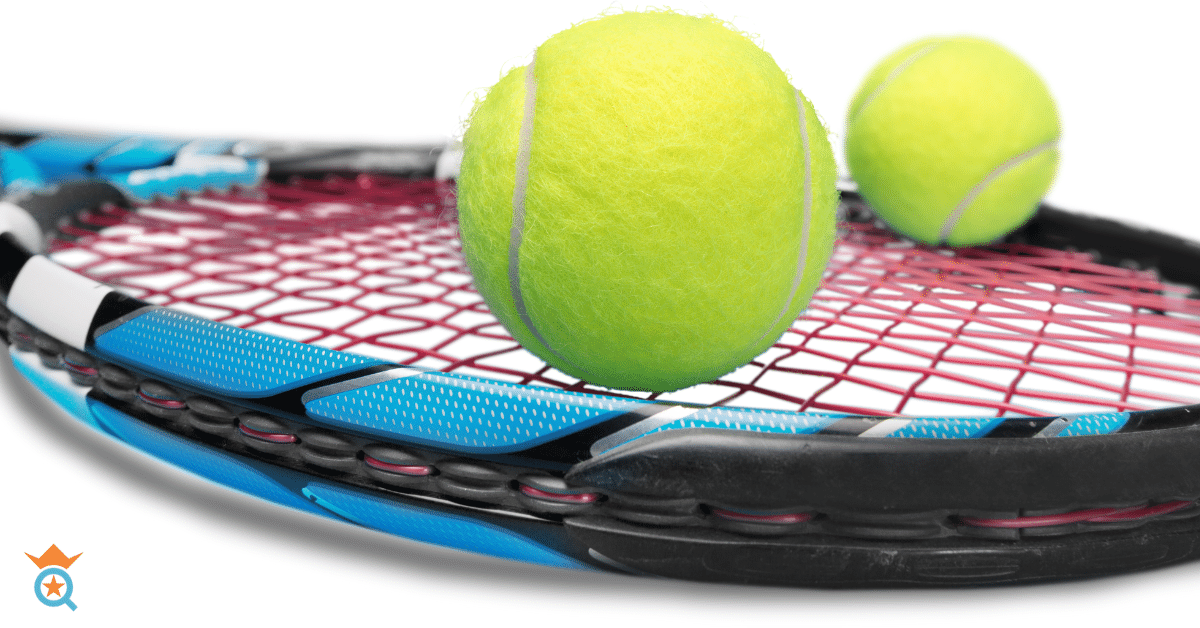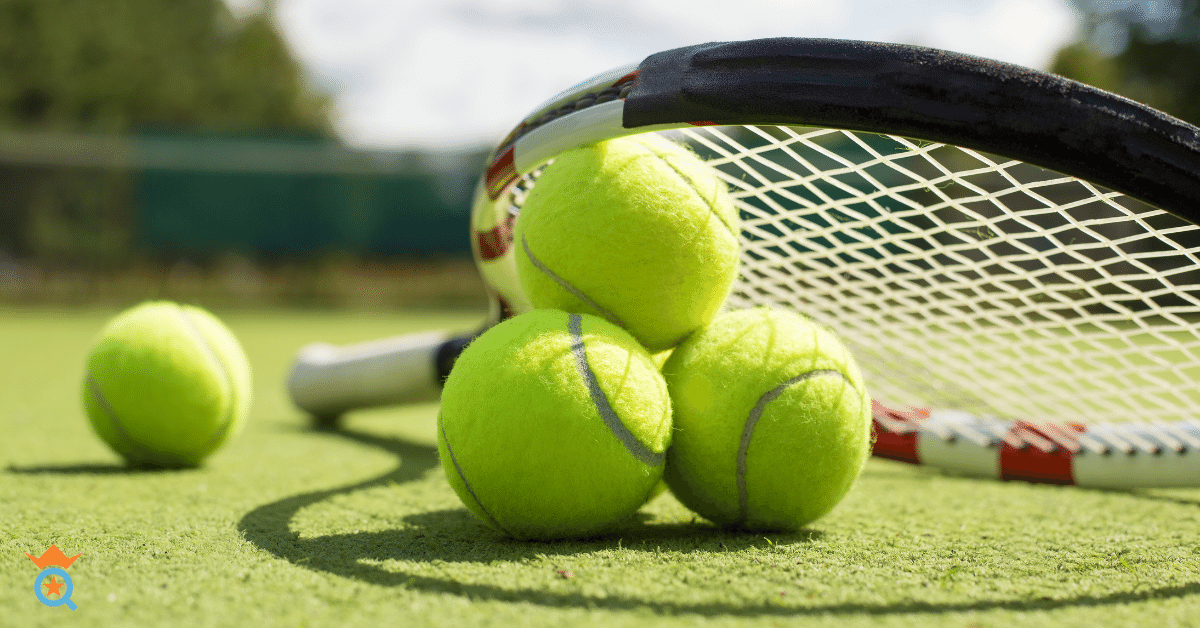Tennis is a sport that has continuously evolved over the years, with its roots traced back to the game of royal or real tennis. The most significant constant has been the ball, which has witnessed several modifications since the inception of the sport.
The history of tennis balls provides us with insights into the development of the modern game, from the first tennis ball to the ones we see today in international tennis tournaments.

Setting the Ball Rolling: Origins of Lawn Tennis and Its First Balls
Lawn tennis, the game we all adore, took roots from a more aristocratic predecessor, royal or real tennis, back in the 1870s. Both involve players sending a ball whizzing across a net.
But they're poles apart when it comes to the court setup, scoring methods, and more.
Now, the million-dollar question - when did the first tennis ball make its appearance? In the royal tennis era, balls were crude affairs, made of leather or cloth, and stuffed with whatever was at hand - rags or horsehair.
However, the advent of lawn tennis ushered in the era of the rubber ball, changing the game forever.
These old tennis balls were shaped from rubber, primarily imported from India. The process utilized vulcanized rubber, a revolutionary process devised by Charles Goodyear in the 1850s.
Initially, the balls were all rubber, but as tennis players sought better durability and performance, the balls were clothed in flannel stitched around the rubber core.

A New Leaf: Transitioning from the Clover-Leaf Era to Modern Tennis Balls
In the good old days, these rubber balls were assembled using a process known as the 'clover-leaf' method. It involved stamping an uncured rubber sheet into a shape reminiscent of a three-leaf clover, which was then formed into a spherical shape. The process of crafting three tennis balls in this way required considerable precision and skill.
As the game advanced and demanded a higher degree of uniformity, especially in terms of wall thickness, the clover-leaf method took a backseat. Modern techniques involve molding two separate half-shells under compression and combining them to create the core of the ball.

A Palette of Colors: From Monochrome to Yellow
Back in the day, tennis balls came in just two colors - black or white, chosen to contrast with the color of the court. But things changed in 1972 when the International Tennis Federation (ITF) decided to color the balls yellow. The reason?
It was found that yellow tennis balls were more discernible to television viewers. Despite this change, Wimbledon, the prestigious tennis tournament, stuck with white balls until 1986. Tradition, am I right?

Scaling Heights: High Altitude Tennis Balls
In 1989, another milestone was etched in the history of tennis balls. That was the year high-altitude tennis balls were introduced, designed to maintain their bounce despite the reduced air pressure at high altitudes.
Before this, there was just one type of tennis ball. Recognizing the need for diversity, the ITF added Type 1 and Type 3 balls to the rules in 2002.

Present Day Tennis Balls
From humble rubber balls to pressurized tennis balls, from monochrome to yellow, the tennis ball has journeyed far. Today, the standard tennis ball used in modern tennis weighs between 56.0-59.4 grams and boasts a diameter range of 6.54 cm to 6.86 cm for a Type 2 ball.
The game of tennis has always been about evolution and innovation. Recognizing the need to encourage wider participation, the ITF has recently introduced slower balls, including:
- Foam rubber balls: Soft, slow, and safer, ideal for kids and beginners.
- Pressureless balls: These maintain their bounce longer, great for practice sessions.
Not to mention the tweaks made to suit different types of play, like beach tennis and wheelchair tennis.
Well, that's it for our trip down memory lane. The next time you're on the court, you'll have a whole new appreciation for that neon yellow ball zipping past you. It's not just a ball; it's a symbol of a game's evolution, steeped in history and ceaselessly innovating for the future.
Keep enjoying the game, and remember, every serve, every volley, and every match point contributes to the story of tennis.








